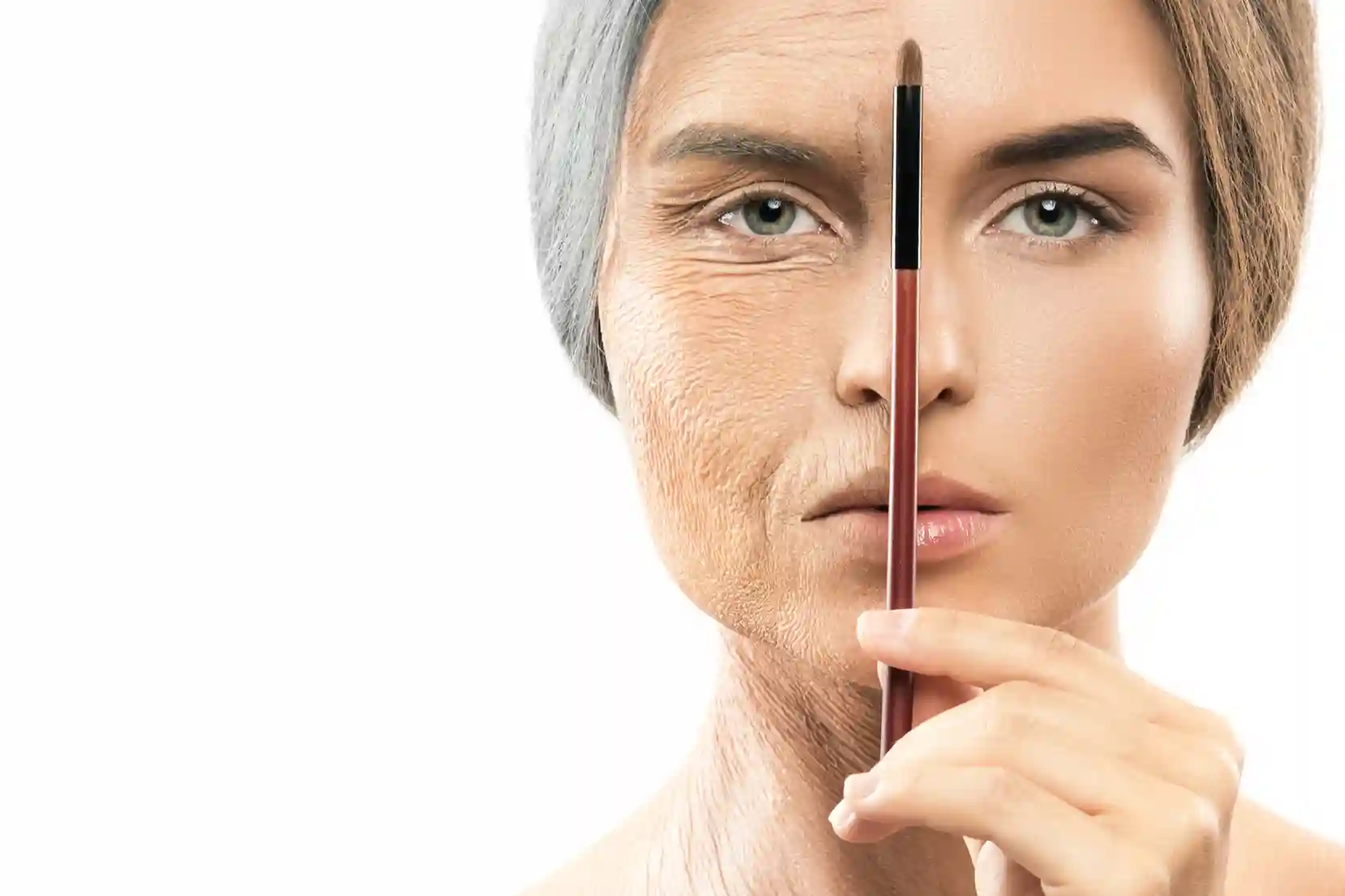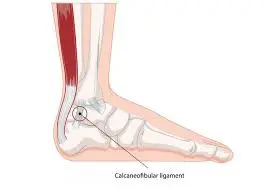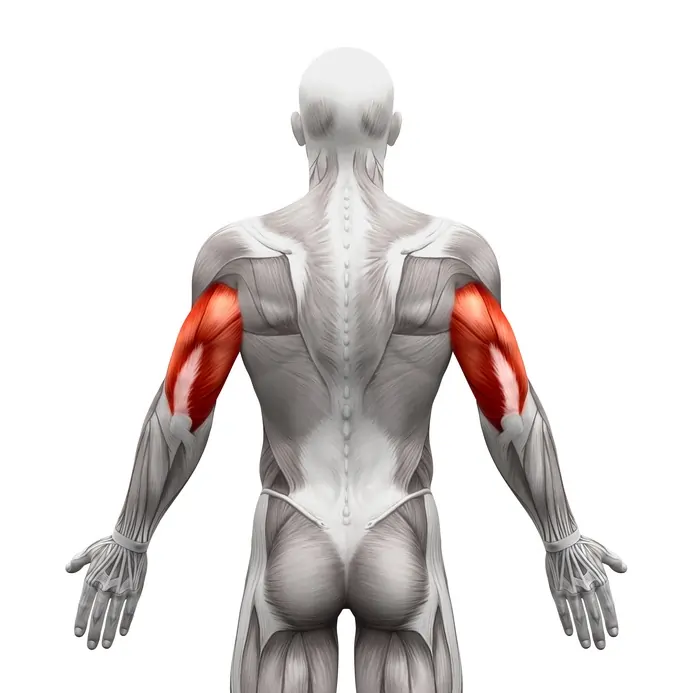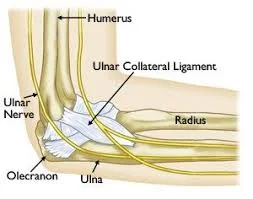Skin Tightness
What is a Skin Tightness?
If your skin feels tight, it may indicate dryness due to low humidity or frequent washing with severe antiseptics. If your skin feels tight, it is probably too dry. Many individuals experience skin tightness, which can occur for various reasons. As your body ages, wrinkles, roughness naturally develop. The skin becomes less capable of generating collagen and elastin, which help maintain its firmness and elasticity.
Your skin feeling tight from time to time is fairly common, particularly after being exposed to severe weather such as heat or cold temperatures. Using hot water and a severe creme or cleanser when washing your face can also cause tightness, as this can remove natural oils and result in dry skin. If your skin is persistently tight, though, it may be due to an underlying issue that requires attention.
Improving skin elasticity and dryness defines skin tightening, which is a key aspect of skin regeneration. Multiple energy-based devices can achieve considerable skin tightening without surgical intervention, applicable to facial and non-facial areas.
Several nonsurgical methods utilizing radiofrequency, ultrasound, and lasers have been developed in recent years to assist in tightening skin on the face and other areas of the body. Although these treatments do not involve surgery, they must be carried out by a licensed professional and under medical supervision.
What is the skin surface?
The skin, which constitutes the largest organ of the body, is composed of water, protein, fats, and minerals. Your skin serves as a barrier against germs and helps control body temperature. Skin nerves assist you in perceiving sensations such as heat and cold.
Your skin, together with your hair, nails, oil glands, and sweat glands, comprises the dermal system.
What are the skin’s layers?
Three layers of tissue:
- Epidermis, the topmost layer.
- Dermis, the intermediate layer.
- Hypodermis, the lowermost layer consisting of fat.
Functions of Skin
The skin serves many more functions than you may think. Some of them are listed below:
- Protecting barrier. This is the most apparent function. Your body is protected from water loss, bacterial and germ invasion, physical injury, chemical harm, and UV rays by the skin.
- Immune protection. Your immune system struggles with infections with the aid of your skin, which generates substances that destroy bacteria and fungi. Your skin is home to cells that notify the immune system of potential threats.
- Keeping your body in balance. That involves controlling your body temperature and maintaining its water balance. Blood vessels and sweat glands in your skin work to ensure that you maintain a stable temperature, avoiding overheating or getting too cold.
- Production of Vitamin D. Your skin generates vitamin D when it is exposed to sunlight. This vitamin plays a crucial role in maintaining healthy bones and aids the immune system in protecting off infections.
- Sensory function. Your skin contains sensors that can sense touch, heat, cold, and pain. This aids in protecting you from damage and allows you to engage with your environment without causing yourself harm.
Thin skin vs thick skin
The term “thick” skin refers to skin that is generally firmer and contains more collagen. The protein in the skin that provides its firmness is collagen. However, this is not always the case; skin can be thick simply due to fat.
Thin skin is typically characterized by looser skin and a lower collagen content. Once more, this is not a constant factor, as the skin can be thin and useful yet still have a great degree of firmness.
Types of skin tightening procedures
The treatments outlined below utilize devices to provide targeted energy that heats deeper skin layers and promotes the production of collagen and elastin.
Ultrasound skin tightening.
With the help of a micro-focused ultrasound, heat is directed deep into your skin, penetrating as far as 5 millimeters beneath the surface. This can firm and lift your facial skin, neck, and upper chest, and reduce the visibility of wrinkles.
Your ultrasound therapy results may take up to six months to manifest, but they can also be evident after just one session.
Radiofrequency (RF) therapy.
Delivers heat to your skin, stimulating collagen production. In contrast to ultrasound, radiofrequency is aimed at the outermost layer of your skin, known as the epidermis. The FDA has approved it for use on the face, neck, body, and hands. It is possible to combine RF treatments with micro needling Just like with ultrasound skin tightening, an adjustable device is used to deliver heat to your skin, stimulating collagen production. In contrast to ultrasound, radiofrequency is aimed at the outermost layer of your skin, known as the epidermis. The FDA approves it for use on the face, neck, body, and hands. It is possible to combine RF treatments with microneedling to address deeper skin layers. Regardless, results manifest step by step.
Although numerous individuals experience results from just a single RF treatment, achieving the desired outcomes may require two to six treatments. With the appropriate skincare routine, results can endure for as long as three years.
Laser treatment.
Adjustable lasers are used here to penetrate the skin with heat, eliminating the epidermis to access the dermis beneath. It has been shown that laser treatments work especially well on the skin of the upper arms and abdomen. The majority of individuals undergo three to five treatments.
Intense Pulsed Light (IPL).
Various light wavelengths are sent to the deeper layers of your skin. In most instances, several treatments are necessary.
With RF treatment, the doctor can aim for deeper skin layers. With the IPL, they can treat a greater area of skin and different skin conditions. It is generally inadvisable to use IPL treatments on people who have tanned or darker skin.
Causes of Skin Tightness
Scleroderma occurs when the body generates an excess of collagen, which accumulates in bodily tissues. Collagen, a fibrous protein, constitutes the connective tissues of the body, such as the skin.
While experts are uncertain about the precise trigger for this process, it appears that the immune system of the body has some involvement. Scleroderma is probably caused by a mix of factors, including issues with the immune system, genetic predispositions, and environmental triggers.
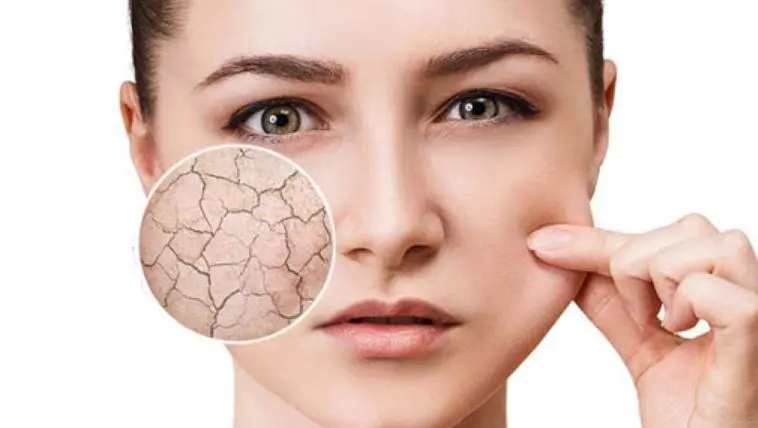
One of the most frequent causes of skin tightness is dehydration. Dehydration reduces skin moisture and elasticity, resulting in a tight and uncomfortable feeling. Inadequate hydration can give rise to various skin issues, such as dryness, flakiness, dullness, and the appearance of fine lines and wrinkles. To fight dehydration, one must consume a sufficient amount of water throughout the day. Your individual needs will determine how much water you require, but a good guideline is to consume at least eight glasses of water daily to keep your skin looking and feeling healthy. Another way to boost your water consumption is by eating fruits and vegetables, which have a high water content.
Harsh Products
- Utilizing a severe soap or facial cleanser while washing can further add to the tightening of the skin. This can occur if you use products that are overly potent or have aggressive ingredients that remove your skin’s natural oils. Such products include, for example, alcohol-based toners or removing dead skin cells with large grains.
- To prevent this problem, opt for a mild gel cleanser and topical skincare products that provide hospitality to your specific skin type. Choose products that do not contain severe chemicals such as sulfates and parabens, and refrain from over-removing dead skin cells from your skin.
Weather Conditions
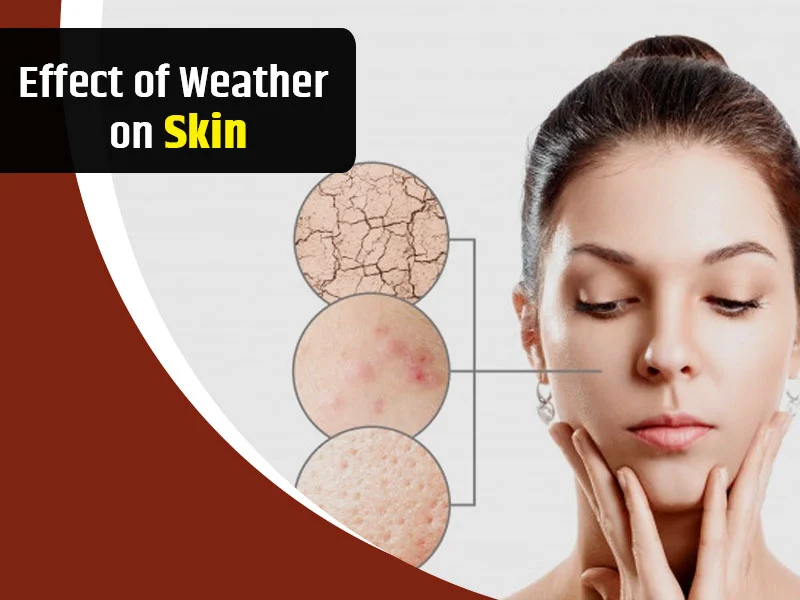
Weather conditions can influence the appearance and texture of the skin’s surface as well. The skin can feel tight and uncomfortable in cold, dry conditions. Conversely, hot, moist atmosphere and sun exposure can trigger excess oil production on the skin, potentially resulting in clogged pores and breakouts.
Using suitable skin care products is essential to protect your sensitive skin from environmental factors. In winter, apply a heavier moisturizer to seal in moisture and protect your skin from severe conditions. During summer, choose a lightweight and oil-free peptide moisturizer and body lotion that won’t block your pores, as well as peptide sunscreens for protection. To learn more about external factors affecting your skin, referred to as free radicals, educate yourself on their effects on the skin.
Symptoms of Skin Tightness
Dryness
- Dry skin can cause the skin to appear and feel rough, itchy, flaky, or scaly. The places where these dry patches develop differ from individual to individual. It is a widespread condition that can affect individuals of any age.
- Dry skin, referred to as xerosis or xeroderma, can result from various factors such as cold or dry weather, sun damage, the use of severe soaps, and excessive bathing.
Itchiness.
The scalp, an arm, or a leg can be affected by itchy skin in small areas. Alternatively, it can encompass the entire body. Skin can become itchy even if there are no other visible changes on it.
- Inflamed skin
- Scratch marks
- Bumps, spots, or blisters
- Dry, cracked skin
- Leathery or scaly patches
At times, the itchiness can be severe and persist for a long duration. The area becomes more itchy when you rub or scratch it. The more it itches, the more you feel the urge to scratch. It can be challenging to break this cycle of itching and scratching.
Flakiness or scaling.
- Scaling skin, or scaly skin, is when the outer layer of your skin cut off in large fragments that look like fish scales. It can occur because of allergies, infections, or dermatological conditions such as psoriasis.
Cracked or rough skin.
- Sometimes, the reason for cracked skin is a dermatological condition like eczema or psoriasis, or it may have resulted from the skin encountering an irritant. Cracked skin may also indicate an underlying medical issue. As an example, individuals suffering from diabetes might observe that the skin on their soles is cracked.
Side Effects
These procedures are all carried out in a doctor’s office and should take under an hour. After treatment, you should be able to return to normal activities within a day. Mild pain can be relieved with non-prescription painkillers. Usually mild, their side effects may consist of:
- Redness
- Numbness
- Bruising
- Pain
Risk factor
Scleroderma can affect anyone, though it occurs more frequently in individuals assigned female at birth. The age range of 30 to 50 is when most people usually develop scleroderma. People of African descent usually experience onset at an earlier age and have a greater likelihood of having more extensive skin involvement and lung disease.
It appears that several other combined factors affect the risk of developing scleroderma:
- Genetics. Individuals with specific genetic changes appear to have a higher likelihood of developing scleroderma. This could explain the family-based accumulation of scleroderma in a minority of cases, as well as the higher prevalence of certain scleroderma types.
- Environmental triggers. Studies indicate that for some individuals, symptoms of scleroderma may be activated by contact with specific viruses, medications, or substances. Being exposed to certain toxic substances or chemicals repeatedly, like in a work environment, can also heighten the risk of developing scleroderma. For the majority of individuals, an environmental trigger cannot be pinpointed.
- Immune system conditions. It is thought that scleroderma is an autoimmune disease. This indicates that it happens partly due to the immune system’s onset of attack on the connective tissues. Individuals with scleroderma might also exhibit symptoms of other autoimmune diseases, including rheumatoid arthritis, lupus.
Treatment for the skin tightness
If your skin feels tight, there are several measures you can take to ease the pain. To begin with, ensure you are consuming enough water for hydration. A hydrating moisturizer can be applied to dry skin to help seal in moisture and relieve tightness. Furthermore, avoid irregular products for your skin, and protect it from environmental factors such as sunlight and low temperatures by using suitable skincare items.
There are multiple options aside from the aforementioned non-surgical treatments. You might choose to apply creams or get dermal injections.
- Botulinum Toxin Type A (Botox). Botox prevents certain muscles from contracting when injected into them. This results in a smoother appearance of your skin. Results can take as long as 3 days to show up and persist for several months.
- Soft Tissue Fillers. These injections consist of fat, collagen, and hyaluronic acid. They make your skin fuller and smooth out wrinkles. The impacts are short-lived.
- Over-the-counter and prescription topicals. Ointments and creams that are applied to the skin usually yield only slight improvements, even under optimal circumstances. For optimal results, seek out products with retinoids like adapalene, tazarotene, or tretinoin. Although it may take several months, numerous individuals observe enhancements in fine lines and wrinkles after ongoing use.
- Vitamin C (ascorbic acid)
- Niacinamide
- Green tea extracts
- Peptides
- Alpha hydroxy acids
- Retinol
Lastly, moisturizing your skin will assist in making it appear more youthful by giving it a fuller look. Regularly applying sunscreen will aid in preventing skin damage.
Home Remedies For Skin Tightening
Skin tightening or rough skin is a significant dermatological issue encountered by both genders. This issue typically arises when a person gives many hours to the gym to lose weight, however, this has the unintended consequence of tightening their skin. Usually, the issue of skin tightening is connected to the body’s loss of fat.
Anyone can experience skin tightening. Skin tightening can occur in various common areas of the body, such as the jowls, throat, chin, upper arms, abdomen, and eyelids. If you were also dealing with the issue of skin tightening and searching for methods to tighten your skin, you might have various options such as exercising, taking supplements, and so on. The most effective way to resolve this problem is to experiment with skin-tightening home remedies. You can follow the home remedies for skin tightening discussed below:
Coconut Oil

One of the best home remedies for skin tightening is coconut oil. It features strong antioxidant properties that aid in eliminating free radicals that can harm the skin. Additionally, it hydrates and moisturizes the skin to avert the issue of skin tightening. To apply this home remedy for tightening skin, take a teaspoon of coconut oil and massage it onto the relevant areas for over five minutes. This massage allows the coconut oil to penetrate deeper into the skin, and using it before bedtime can enhance its benefits.
Honey Mask and Egg White

Using a mask of honey and egg white is another excellent suggestion for tightening the skin on your face. Egg white contains a significant amount of albumin, a protein that aids in cell regeneration for our skin, boosts its elasticity, and gives it a natural radiance. In a similar vein, honey offers strong anti-oxidant qualities that effectively eliminate skin toxins accumulated over time. Therefore, to achieve a natural skin-tightening effect, you should take the egg white from one egg (while discarding the yolk) and combine it with two tablespoons of honey. Then, put this mixture on your face and neck, leave it for 15 minutes, and rinse it off with warm water. This face mask can be used once a week for effective results.
Coffee Scrub
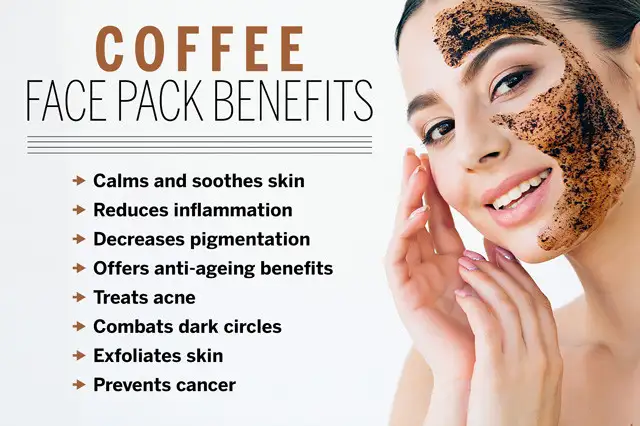
For millions, coffee is a beloved beverage in the morning and evening. Not only does coffee help enhance physical performance and maintain alertness, but it also aids in addressing the issue of skin tightening. This remedy for rough facial skin can be applied before bedtime to achieve effective results. It contains anti-oxidants that slow skin aging, and when coffee is combined with other ingredients as a scrub, it effectively firms and removes dead skin cells while removing fat deposits.
To prepare these natural skin-tightening remedies at home, you need to take one-fourth cup of coffee, one-fourth cup of brown sugar, half a teaspoon of cinnamon, and 2 tablespoons of coconut by gently heating them. All of these components must be blended together in a bowl, after which you should use two fingers to apply the mixture to your face while moving in circles. This scrub can be applied weekly.
Olive Oil
Using olive oil is another method to firm your skin. Olive oil has been used since ancient times, before the invention of skin moisturizers, hydrating lotions, or creams. Olive oil contains a good amount of Vitamin E and has anti-oxidant properties, which help protect the skin from damage and address issues with skin tightening. During your morning or evening shower, you can apply olive oil to your face and massage it for 3-5 minutes to facilitate deep penetration into the skin. It can be used every day in place of your body cream or lotion.
Yogurt Mask
A yogurt mask is another excellent home remedy for tightening the skin. The lactic acid in yogurt shrinks skin pores when the mask is applied, resulting in smoother skin. For effective skin tightening, the best tip is to combine 2 drops of lime juice with two tablespoons of yogurt. For effective results, massage this mask onto your face, chest, and neck for almost 10 minutes.
Lemon
Lemon serves as yet another natural remedy for skin tightening. Lemon’s Vitamin C aids in increasing collagen production and restoring skin elasticity. In addition, lemon possesses astringent qualities that reduce wrinkles and serve as an effective skin-tightening treatment. Apply several drops of lemon juice to your face and neck. Utilize this approach two to three times weekly.
Banana
Banana is thought to be another effective remedy for rough skin on the face and is also seen as a beauty powerhouse. It contains a considerable quantity of potassium, zinc, iron, and magnesium, as well as vitamins A, B, C, and D. A ripe banana can be mashed and mixed with a few drops of lemon juice, and this combination can then be applied to the affected areas. The vitamins and minerals found in both banana and lemon create a potent anti-aging face mask that aids in addressing the issue of skin tightening. The primary advantage of utilizing this blend is that it will assist in calming your skin.
Exercise

You can attempt various skin-tightening exercises at home. Muscle tightening and body mass building through exercise can greatly lessen rough skin. The various workouts to reduce rough skin are:
- Weight Lifting: You can exercise with weights or resistance bands, both of which will aid in muscle mass growth.
- Facial exercise: Regularly practicing facial exercises significantly reduces damaged skin around the throat, jaw, and chin.
- Yoga: The Simhasana (lion pose) can be tried to reduce rough skin.
Consequently, damaged skin can represent a major issue. However, there is no need for concern: by applying the skin-tightening home remedies mentioned above, you can easily reduce the tightened skin on your face, neck, and chest.
In what way can One Skin assist?
The OS-01 peptide from One Skin can tackle the fundamental reasons for tight skin by boosting a vital indicator linked to hyaluronic acid production, thereby aiding in skin moisture retention. OS-01 FACE, OS-01 EYE, and OS-01 BODY have all been clinically validated for their effectiveness in improving skin hydration.
Moreover, PREP can boost the moisturizing effects of OS-01 FACE. All One Skin products do not contain common irritants such as sulfates, parabens, and fragrances, making them appropriate for even the most problematic or sensitive skin types. Including these products in your skincare regimen can offer mild relief for the skin that feels tight.
Conclusion
- Tight skin is often caused by dehydration, which can result in a loss of moisture and elasticity in your skin. Skin can also become tight due to the use of aggressive skin care products or exposure to severe environmental conditions like cold or dry weather. Tight skin may feel different from normal skin, but it does not always look different.
- To relieve tightness, it is crucial to keep hydrated, avoid severe products, and protect your skin from environmental factors.
- Using a hydrating moisturizer can help retain moisture and relieve tightness.
Although tight skin can be uncomfortable, it is frequently indicative of an issue with your skin care regimen. You can ease the pain of tight skin and attain a healthy, radiant complexion by keeping hydrated, using mild products, and protecting your skin from environmental factors.
FAQs
What causes my skin to feel so tight?
Dehydration reduces skin moisture and elasticity, resulting in a tight and uncomfortable feeling. Inadequate hydration can give rise to various skin issues, such as dryness, flakiness, dullness, and the appearance of fine lines and wrinkles.
Which condition leads to tight skin?
Most individuals suffering from scleroderma experience skin hardening and tightening. Typically, the initial areas of the body to be impacted are the fingers, hands, feet, and face. For some individuals, thickening of the skin may also affect the forearms, upper arms, chest, abdomen, lower legs, and thighs.
What leads to skin stiffness?
Genetic alterations in the FBN1 gene lead to stiff skin syndrome, which is passed down through autosomal dominant inheritance. The diagnosis is founded on a clinical assessment aligning with Stiff Skin Syndrome and can be validated through genetic testing.
Why do I feel so tense?
Dehydration, deconditioning, and lack of movement or prolonged positioning can all contribute to changes in blood flow to the area, and the resulting metabolic stress may cause a sensation of tightness. Increased tone, spasms, and cramping differ from muscle shortening.
Is having tight skin beneficial or detrimental?
If your skin feels tight, it is probably too dry. One or both of these may be occurring: Humidity fluctuations: Xeroderma (or xerosis), the clinical designation for very dry skin, is a frequent issue in arid months.
For how long does skin tightness persist?
For instance, if treatment is successful and aftercare is thorough, most patients can anticipate that the effects of radiofrequency skin tightening procedures will last for one to three years.
Is it possible for the skin to tighten without external help?
Depending on how much loose skin there is, it can “snap back.” You can enhance your skin health through dietary choices, physical activity, and lifestyle modifications. Additionally, there are noninvasive procedures available that can tighten loose skin without the need for surgery.
What is the reason for tight skin?
Excess collagen in your skin and other tissues can lead to the formation of tight, hard areas. Scleroderma can affect multiple systems within your body. Scleroderma can be classified into two main types: Localized scleroderma impacts only the skin and the underlying structures beneath it.
Reference
- Legs, B. (2025, January 30). Skin tightness vs skin elasticity – Advanced cellulite treatments in London | LipoTherapeia. Advanced Cellulite Treatments in London, by LipoTherapeia. https://www.lipotherapeia.com/the-peach-factor-blog/skin-tightness-vs-skin-elasticity
- WebMD Editorial Contributor. (2023, May 12). What to know about skin tightening. WebMD. https://www.webmd.com/beauty/what-to-know-about-skin-tightening
- Scleroderma – Symptoms and causes. (n.d.). Mayo Clinic. https://www.mayoclinic.org/diseases-conditions/scleroderma/symptoms-causes/syc-20351952
- Ch, S. K. (2022, November 8). Home remedies for skin tightening. MedPlus Health Services Limited. https://www.medplusmart.com/healthy-life/info/9501/home-remedies-for-skin-tightening

